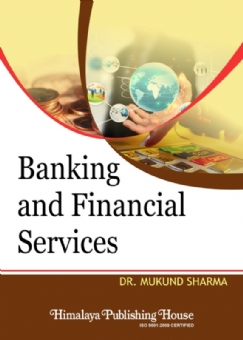The book, Dietary Supplements and Nutraceuticals, shortly as DSN, is written as per the syllabus (R. 2019) laid down by Pharmacy Council of India, New Delhi as an optional or elective subject, entitled, Dietary Supplements and Nutraceuticals, BP8012ET at fourth year level at eighth semester. Few portion is also written based on the then syllabus (2016) laid down by University of Mumbai as elective subject, entitled, Nutraceuticals and Dietary Supplements, BPHE508T at third year level at fifth semester.
Summary of the book, DSN, is that the first chapter illustrates various terms related to nutraceuticals. This also emphasises on the classification of nutraceuticals based on their uses in prevention and treatment of diseases and or disorders followed by nutrition and aging with few functional foods used as nutraceuticals containing markers. The second chapter elaborates phytochemicals as nutraceuticals with their occurrence, chemical nature and medical benefits. The third chapter comprises introduction to free radicals with special attention on reactive oxygen species. The fourth chapter deals with free radicals again, with their use in diabetes, atherosclerosis, inflammation, cancer and various vital body part damages. This chapter is followed by antioxidants. The fifth chapter describes regulatory aspects of nutraceuticals pertaining to Indian, European and US Regulations.
Contents –
Introduction
1. Unit
A. Definitions of Functional Foods, Nutraceuticals and Dietary Supplements, Classification of nutraceuticals, Health Problems and Diseases that can be Prevented or Cured by Nutraceuticals:
Definitions
Classification of Nutraceuticals
Health Problems and Diseases and Nutraceuticals
Herbs and Spices for Weight Loss Management
Herbs and Spices in Diabetes Prevention and Treatment
Herbs and Spices in Cancer Prevention and Treatment
Herbs in Cardiovascular Diseases Prevention and Treatment
Herbs in Stress Prevention and Treatment
Herbs in Prevention and Treatment of Osteoarthritis
B. Public Health Nutrition, Maternal and Child Nutrition, Nutrition and Ageing, Nutrition Education in Community:
Nutrition
Nutrition and Ageing
Nutrition Education in Community
C. Source, Name of Marker Compounds and their Chemical Nature, Medicinal Uses and Health Benefits of Following Used as Nutraceuticals/Functional Foods:
Spirulina
Soyabean
Ginseng
Garlic
Broccoli
Gingko
Flaxseeds
D. Functional Foods for Chronic Disease Prevention:
Functional Foods
Examples of Functional Foods
2. Unit II
Phytochemicals as Nutraceuticals: Occurrence and characteristic features (chemical nature medicinal benefits) of following
(a) Carotenoids:
Carotenes:
ɑ- and β -carotene
Lycopene
Xanthophylls:
Lutein
Zeaxanthin
Astaxanthin
(b) Sulfides:
Diallyl Sulfide
Allyl Trisulfide
(c) Polyphenolics:
Resveratrol
Pycnogenol
Curcumin
(d) Flavonoids:
Rutin
Naringin
Quercitin
Anthocyanidins
Catechins
(e) Prebiotics/Probiotics:
Fructooligosaccharides
Lactobacillus
(f) Phytoestrogens:
Isoflavones
Daidzein
Genistein
Lignans
(g) Tocopherols
(h) Functional Foods:
Proteins
Minerals
Marine
Vitamins
Cereals
Vegetables
Beverages
(i) Dietary Fibres
(j) Complex Carbohydrates as Functional Food Ingredients:
Glucomannan
Galactomannan
3. Unit III
Introduction to Free Radicals: Free radicals, reactive oxygen species, production of free radicals in cells, damaging reactions of free radicals on lipids, proteins, carbohydrates, nucleic acids.
Free Radicals
Reactive Oxygen Species (ROS)
Types of ROS
Role of ROS as Messengers
ROS and Oxidative Damage to Biomolecules
4. Unit IV
A. Free Radicals: Free radicals in Diabetes Mellitus, Inflammation, Ischaemia-Reperfusion Injury, Cancer, Atherosclerosis, Free Radicals in Brain Metabolism and Pathology, Kidney Damage, Muscle Damage, Free Radicals Involvement in Other Disorders, Free Radicals Theory of Ageing:
Free Radicals in Diabetes Mellitus
Free Radical in Inflammation
Free Radicals in Ischaemia-Reperfusion Injury
Free Radicals in Atherosclerosis
Free Radicals in Brain Metabolism and Pathology
Free Radicals in Cancer
Free Radicals in Kidney Damage
Free Radicals in Muscle Damage
Free Radicals Theory of Ageing
Modifications of Free Radicals Theory of Ageing
B. Antioxidants: Endogenous Antioxidants – Enzymatic and Nonenzymatic Antioxidant Defence, Superoxide Dismutase, Catalase, Glutathione Peroxidase, Glutathione Vitamin C, Vitamin E, α-Lipoic Acid, Melatonin Synthetic Antioxidants: Butylated Hydroxyl Toluene, Butylated Hydroxyl Anisole:
Antioxidants
Endogenous Enzymatic Antioxidants
Endogenous Non-enzymatic Antioxidants
Synthetic Antioxidants
Methods to Evaluate Antioxidant Activity
5. Unit V
A. Effect of Processing, Storage and Interactions of Various Environmental Factors on the Potential of Nutraceuticals:
Types of Formulation
Challenges in Reference to Nutraceuticals
Types of Interactions
B. Regulatory Aspects: FSSAI, FDA, FPO, MPO, AGMARK. HACCP and GMPs on Food Safety. Adulteration of Foods:
Regulatory Requirements/Aspects in India
Regulatory issues/Regulatory Compliance
Regulations of Nutraceuticals in India
Indian Certifications
International Terminologies
European Union Regulations on Nutraceuticals
US Regulations on Nutraceuticals
Adulteration of Foods
C. Pharmacopeial Specifications for Dietary Supplements and Nutraceuticals:
Monograph and Specification
Pharmaceutical Specifications for Dietary Supplements
6. References
7. Structures







